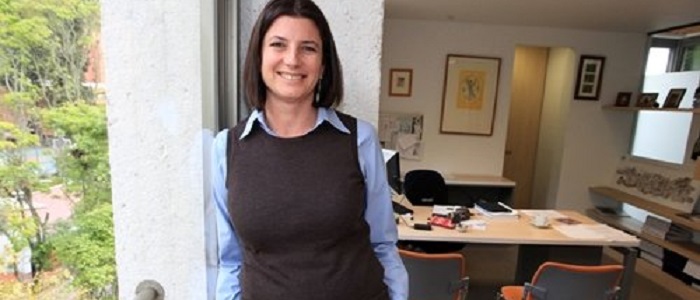
Five Questions with Ana Maria Ibañez, Professor Universidad de los Andes, Rice Visiting Professor, MacMillan Center, Yale University.
Q. Much of your research is on human displacement, and the impact of conflict in Colombia. What drew you to these topics?
I am an environmental economist. My PhD dissertation estimated the welfare costs of marine pollution on human health. When I came back to Colombia, my country, the internal conflict was at its peak: nearly 700,000 people were forced to migrate every year. I decided to apply the theoretical and empirical methods of environmental economics to estimate the welfare costs of violence and conflict. Given the threats the civilian population was facing, and still faces, I preferred to concentrate on studying conflict, rather than the environment. By providing a quantitative analysis, I wanted to provide rigorous evidence to demonstrate the suffering and large economic costs that the conflict imposes on the population.
Q. Its most interesting that you applied the tenets of environmental economics to calculating the cost of the conflict. Has it ever been tried before?
When Stefanie Engel and I started applying these methods to understanding the welfare costs of conflict, it had not been tried before. Using this framework was interesting, but limited, because it provided an aggregate of monetary costs. We wrote one paper with this idea in mind, and then moved on to understanding the mechanisms that were causing these large welfare losses. I used funding from the Global Development Network (GDN) to pursue this second stage of my work.
Q. What are the economic costs of the conflict for families in Columbia?
My research shows that internally displaced persons face a large economic shock due to the violence they endure, and the ensuing forced displacement. Households leave behind assets, and they need to seek employment in a new region. Their access to risk-sharing mechanisms decreases, the settlement process is difficult, and some face the sequels of post-traumatic syndrome due to the violence they endured. Policy should concentrate on reducing these large negative impacts, while providing households enough flexibility to decide where to live once the conflict ends. These findings apply not only to Colombia, but to other countries that are facing similar forced migration processes.
Q. You wrote a book based on your research. What’s in it?
Indeed I did. I wrote a book, published in 2008, for a general audience, and reserved the papers in more academic language for peer-reviewed journals. The book has had two additional reprints, since. [See below for an open access link]. The purpose of the book is to provide an economic analysis of forced displacement in Colombia, in which I discuss the causes and consequences of internal displacement. The book uses two household surveys I designed and collected, and municipal data to perform this analysis. Each chapter provides policy recommendations.
The GDN grant was crucial to writing this book, and indeed to developing my research and advancing my career.
Q. What is your dream for Colombia – and for yourself?
Since I was born, my country has endured conflict. I dream that Colombia reaches peace after a 52 year war. The extent of victimization, grief, hate and division that this conflict has brought to my country is painful, and a major obstacle for social and economic development. My dream is that my children have a better country than the one I lived in. I hope they are able to witness the end of the conflict soon. At the moment, I am studying the impacts of conflict on the people that stayed in conflict regions. But my dream is to stop doing research on the impacts of conflict and to understand what challenges the post-conflict period will entail.
Read Ana Maria's book (Spanish): El desplazamiento forzoso en Colombia: un camino sin retorno hacia la
In conversation with Madhuri Dass, Head of Communications, Global Development Network, November 2016.
